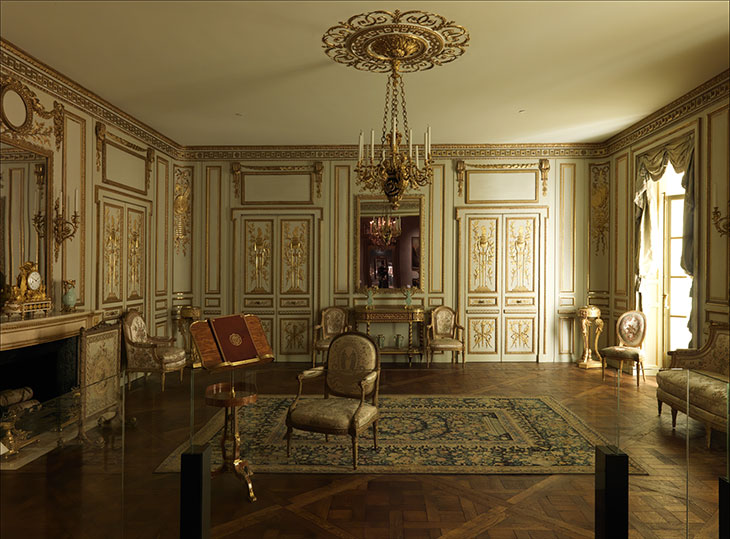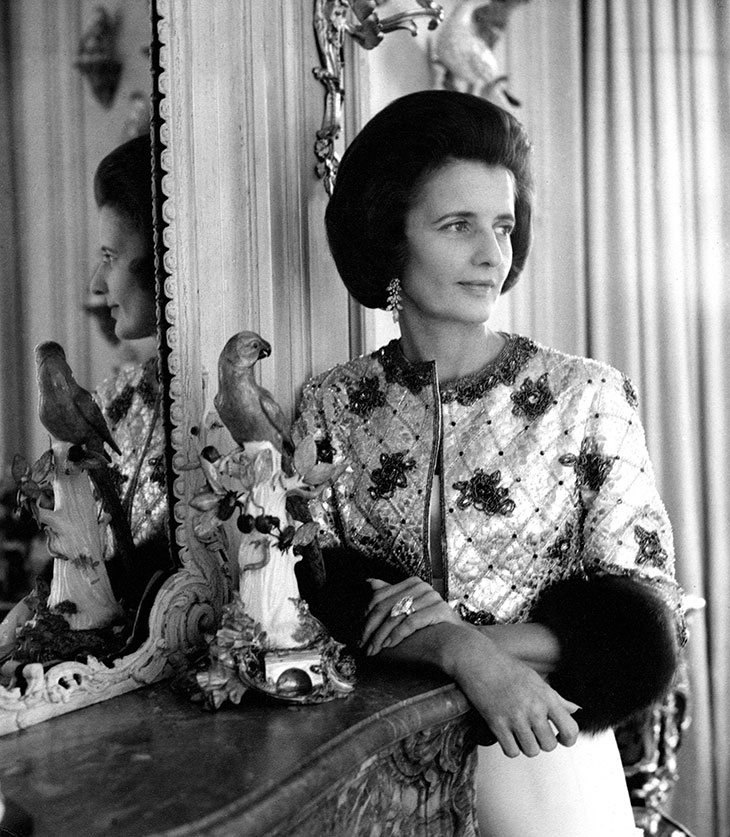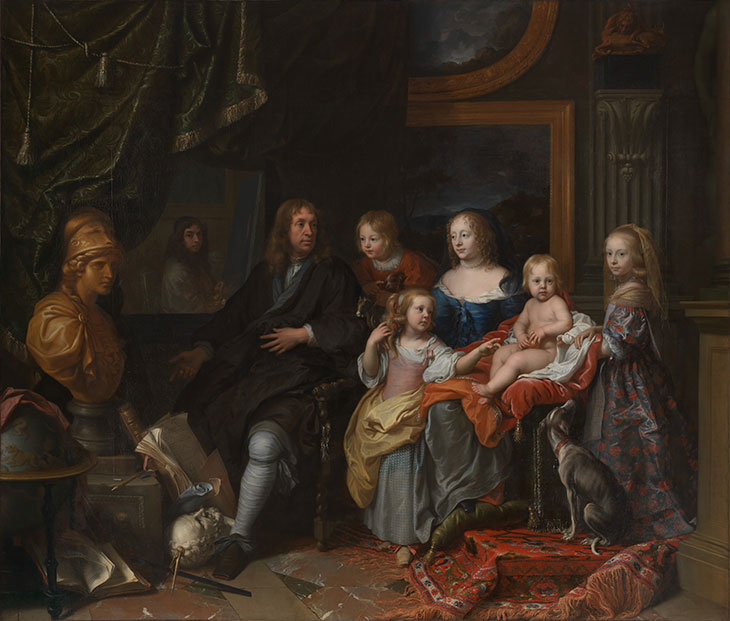Shortly after becoming the head of European Sculpture and Decorative Arts at the Metropolitan Museum of Art in 2001, I visited Jayne Wrightsman (1919–2019) in her elegantly appointed Fifth Avenue apartment. My friend and colleague Harold Koda, who was in charge of the Costume Institute, had proposed an exhibition of 18th-century costume in the Wrightsman Galleries, the famed French period rooms, and I felt I needed Jayne’s approval before proceeding. It may be difficult to imagine now that such an idea could be controversial, but there were curators then who found this to be inappropriate for an art museum. Moreover, as Harold feared that his ‘downtown’ audience would find the premise altogether too ‘ancien régime’, he and fellow curator Andrew Bolton were focusing on the seductive powers of the decorative arts by creating exquisitely dressed mannequins that would be arranged in increasingly risqué tableaux.
Jayne’s response to the idea was sphinxlike, and I left her apartment uncertain. But she hadn’t seemed to say no, so we moved ahead. At the frenzied pace of the fashion world – as opposed to the glacial creep of museums – we mounted the show called ‘Dangerous Liaisons’, which opened in April 2004. Jayne had steered clear of the preparations; however, on the day of the opening, she announced, to our great relief, that she liked the exhibition. In retrospect, it had many elements that she admired: it was stylish, intelligently produced, not without humour, slightly provocative, and, above all, featured works of art and costume of the highest quality. ‘Dangerous Liaisons’ would have the highest attendance of any exhibition at the museum that year.
Boiserie from the Hôtel de Cabris, Grasse (c. 1774). View towards the south wall of the reconstructed room at the Metropolitan Museum of Art in New York

The consequences of this show took me by surprise. For one thing, Jayne Wrightsman so liked the lighting – more varied, dramatic, and true to the period aesthetic than the generally clinical illumination of most period rooms – that she asked if all the rooms could be lit this way, on a permanent basis. Such a change would involve a great deal of money, and then-director Philippe de Montebello, who knew her well, dispatched me as the sacrificial lamb to ask for it. Jayne didn’t blink an eye at the request, this time saying yes clearly. She had one condition – that it be finished in time for her birthday two years hence. An army of conservators and specialised craftsmen raced to complete the renovation, which also afforded the opportunity to add period details such as recreating the hand-embroidered fabric begun by Marie Antoinette and her retinue. The dinner celebrating Jayne and the refurbished rooms was held in the Wrightsman Galleries, appropriately, as many of the boiseries and furnishings had been in her homes before being gifted.
Jayne Wrightsman, photographed by Cecil Beaton for Vogue in 1963. Photo: Cecil Beaton/Condé Nast via Getty Images

Jayne and her husband, Charles B. Wrightsman (1895–1986), began collecting seriously in the 1950s; over time, their passion for European decorative arts and paintings evolved from a personal obsession to a campaign of making these superb objects available to a wider public. In 1957, for example, the couple bought carved and painted wall panels originally in the Hôtel de Cabris in Grasse (c. 1774) and installed them in their New York apartment, creating a dining room. Fifteen years later, they gave the panels to the Metropolitan Museum and worked closely with the curator James Parker and successive department heads John Goldsmith Phillips and Olga Raggio to find or upgrade appropriate furnishings, from the chimneypiece to a chandelier attributed to François Reymond to furniture by Jean-Henri Riesener. The Wrightsmans engaged closely with these galleries for more than four decades, continually perfecting them. Period rooms tend to be a concoction of whatever is available – often of varying quality – that is roughly of the period. Thanks to Jayne’s perseverance, attention to detail and generosity, the Wrightsman Galleries are exceptional in assembling objects that are not only as historically correct as possible but also of the highest quality.
In addition to the vast number of objects that she and her husband gave to the museum – I once printed out catalogue sheets of her gifts alone to my department, and the stack was four feet high – Jayne continued to sponsor acquisitions proposed by curators. When she agreed, the triumph was that these were of ‘Wrightsman quality’. And her largesse was not limited to the decorative arts, of course: through her close relationship with the Department of European Paintings and its successive department heads (Sir John Pope-Hennessy, Everett Fahy, and Keith Christiansen), she made an incalculable contribution towards raising the quality and expanding the range of its holdings. She made a point of getting to know the foremost scholars in the areas of her interest, as well as directors and curators in England, throughout Europe, and as far away as Russia. Some became intimates and shared expert opinions and advice. All of their institutions benefited from the association as well.
Everhard Jabach (1618–1695) and His Family (c. 1660), Charles Le Brun. Metropolitan Museum of Art, New York

Together with that of friends such as Brooke Astor and the Duchess of Devonshire, Jayne’s sense of style influenced New York and London society and taste (for many years, she had an apartment in London overlooking Green Park). While she was a private person who might appear cold and formal, she had genuine warmth and keen intelligence, enlivened by a wicked sense of humour. I remember her sly grin when a near-sighted dinner guest popped a whole truffle in her mouth, mistaking it for an olive. Ever striving for perfection, Jayne trained her perceptive eyes and unerring sense of quality on the selection of works of art and, in doing so, enriched the cultural life of some of the great capitals of the world.
Ian Wardropper, Director of The Frick Collection, was Iris and B. Gerald Cantor Chairman of European Sculpture and Decorative Arts at The Metropolitan Museum of Art from 2001–11.


